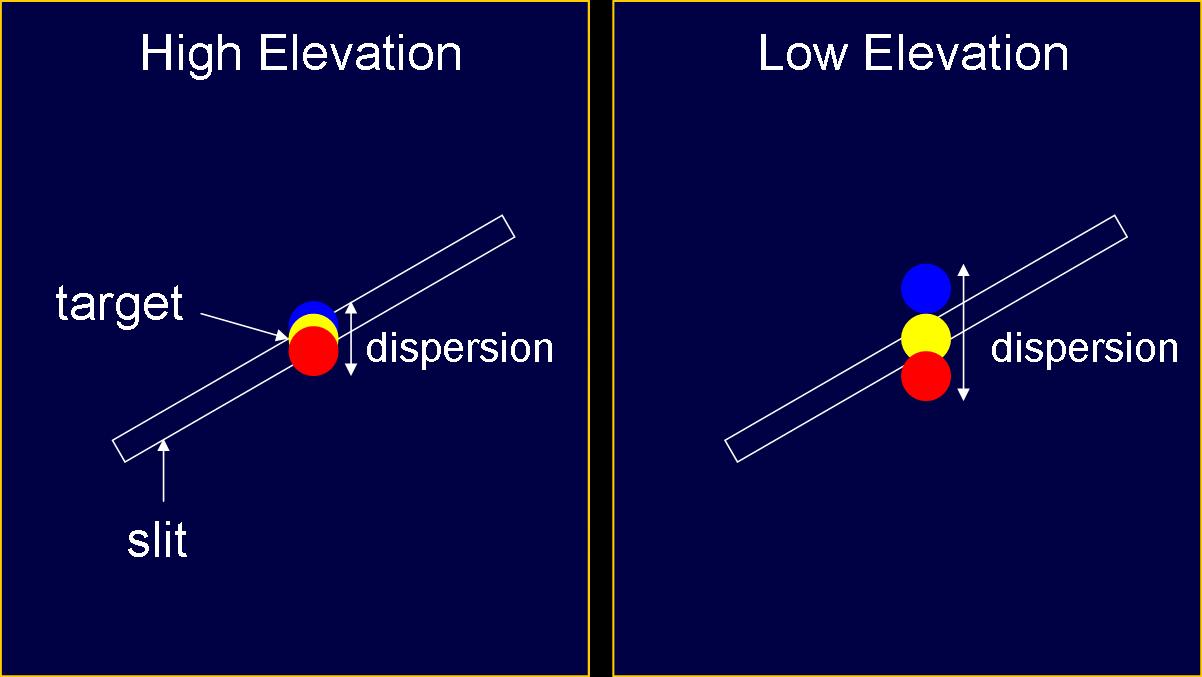Background
The Earth's atmosphere acts like a prism, refracting the light which passes through it and thus causing the apparent position of objects to deviate from their actual position. The amount of atmospheric refraction depends on two factors:- Elevation: the dispersion is zero at the zenith but increases quickly at elevations close to the horizon.
- Wavelength: dispersion is small in the red but pronounced in the blue and ultraviolet.

Figure 1: Dispersion at high and low elevations.
These two figures show the effects of differential atmospheric refraction on spectroscopy. Both figures show a point source observed at a slit angle which is not aligned with the dispersion axis. In the left image (high elevation) the dispersion is minimized and most of the light goes down the slit. In the right image (low elevation) the atmosphere induces much more dispersion in the light much of the light no longer enter the slit, leading to loss of signal as a function of wavelength.
The Cassegrain Atmospheric Dispersion Compensator module (Cass ADC) was designed to reduce the effects of differential atopsheric refraction in both the imaging and spectroscopy modes of the Low Resolution Imaging Spectrograph (LRIS) on the Keck I telescope. For a small penalty in throughput, the dual-prism module improves delivered image quality over a wide range of elevations and wavelengths. See the ADC Characteristics for details regarding how well the ADC corrects for atmospheric dispersion.
Send questions or comments to: